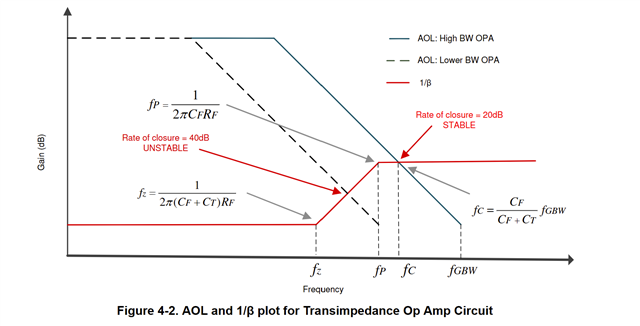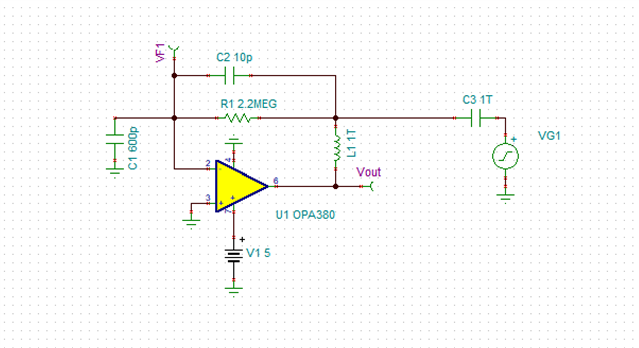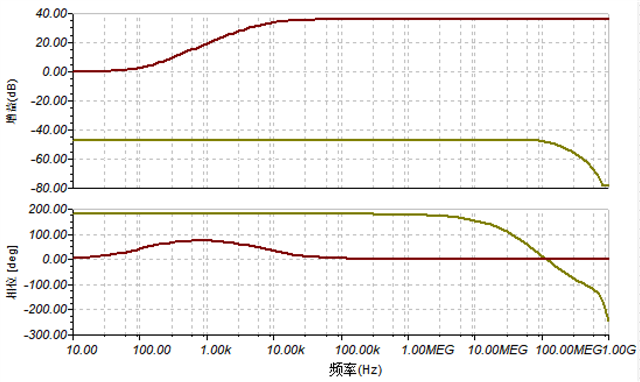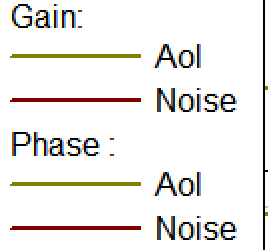Other Parts Discussed in Thread: OPA830
Hello,
I am currently doing an project with transimpedance amplifier for a photodioe, and I would like to test their stability. From some websites, I got an idea that I can verify this through plotting the curve for Aol and 1⁄β, just like shown in the figure. If the rate of closure between Aol and 1⁄β is equal to 20dB, the system is stable.

However, I tried to plot them and the result is not very correct, the schematic for test and results is shown as follow:



The curve equation is :
Aol=Vout(s)/VF1(s)
Noise=1//VF1(s)
How can I modify the simulation to get the correct result?
Best wishes,
Kiwiki



